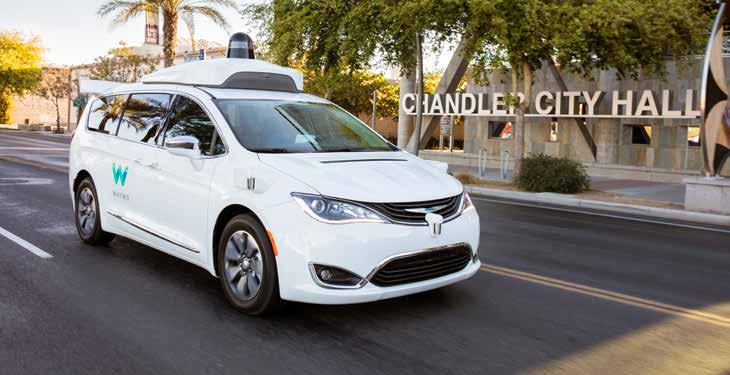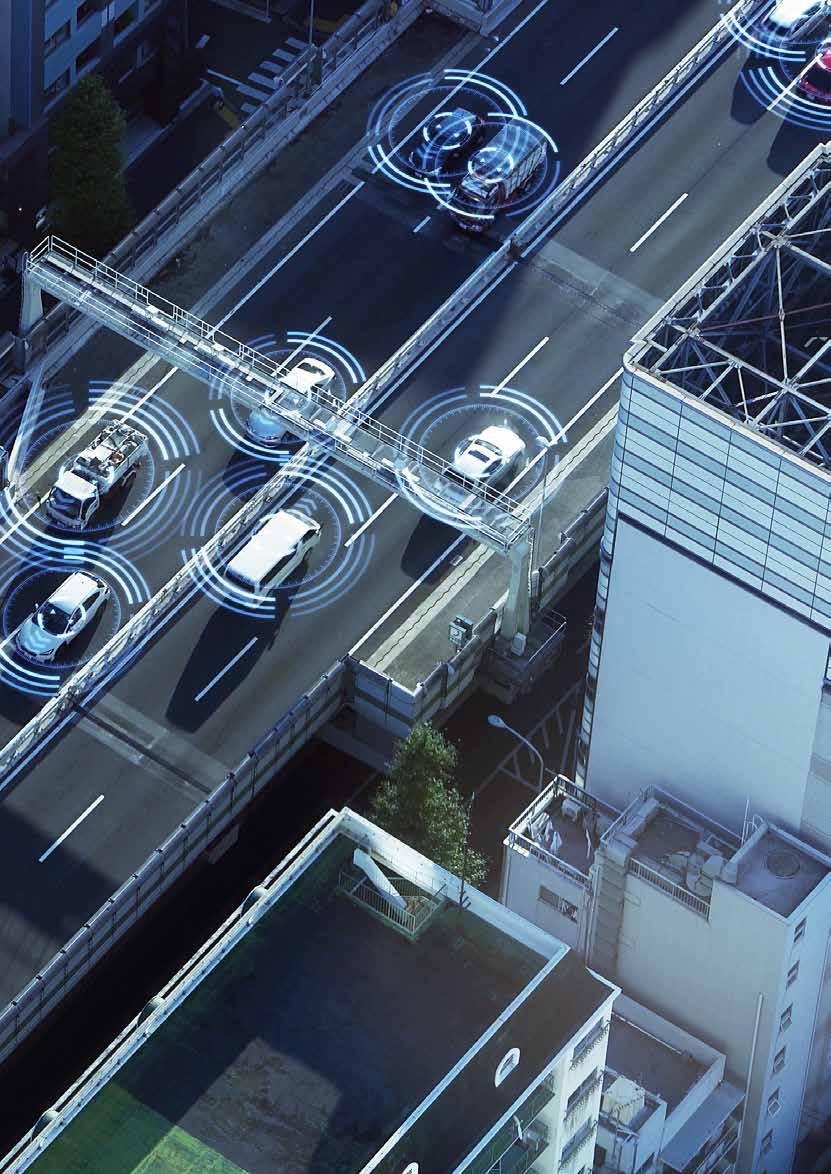
4 minute read
AIM IS TO BE MOBILITY LEADER
FCA investments in research will make it a mobility leader
Group enters into collaborations on CAVs and energy supply
Advertisement
The movement of people and goods is expected to change significantly in the future. Until recently, for people, the choice was fairly straightforward: if you couldn’t walk it, you drove a petrol- or dieselengined private car or took public transport to get to your destination.
However, three technological trends are converging to shape the future of mobility: mobility-as-a-service (MaaS), connected and autonomous vehicles (CAVs), and the electrification of vehicles (EVs).
MaaS involves aggregating a number of different service-based transport modes – such as ride-sharing, car-pooling, ride-hailing and other private and public transit methods – into one booking-andpayment platform.
Despite significant investment and development work, MaaS is not widely available yet and it is also unclear what long-term impact Covid-19 will have on shared mobility methods, due to the perceived increased risk of infection.
CAVs have the potential to offer numerous benefits to both fleets and private customers, such as increased safety and efficiency, as well as reduced emissions and congestion.
FCA Group is collaborating with Waymo (formerly the Google selfdriving car project – see page seven) to develop highly autonomous
The Waymo Pacifica plug-in hybrid minivan will appeal to both fleet and private customers
vehicles, which will be capable of full self-driving under certain conditions.
It will supply more than 60,000 Pacifica plug-in hybrid minivans to collaborate on what it believes will the first significant system in the market for both fleet and private customers.
FCA Group has also invested more than $30 million (£24m) at its Chelsea Proving Grounds in south-east Michigan, USA, to further the development and testing of autonomous vehicles and advanced safety technologies. The all-new facility features a dedicated autonomous highway-speed track, a 35-acre safety-feature evaluation area and a high-tech command centre.
It has also signed a memorandum of understanding to join BMW Group, Intel and Mobileye to create a state-of-the-art autonomous driving platform for global deployment.
The open platform will be scalable from highly- to fully-automated driving and will accommodate the unique needs of multiple auto makers, while affording each the flexibility to offer brand-based differentiation.
Additionally, it is continuing to work with Aptiv to develop an occasional self-driving driving system for its next generation vehicles which is planned to launch next year (2021).
Many FCA Group vehicles already feature autonomous driver

Roberto Di Stefano, FCA head of EMEA e-Mobility
assistance features including autonomous emergency braking and adaptive cruise control, while it also offers a range of connected features to help fleet managers.
Mopar Connect Fleet, developed in co-operation with Targa Telematics, provides fleet decision-makers with remote access to give control over activities, service status maintenance and assistance for each vehicle. Capabilities include the real-time position of vehicles, route management reports for crashes, refuels, geo-fencing, and diagnosis for extraordinary maintenance. The app also allows users to view fuel levels, battery status, door lock status, fuel consumption and tyre pressures.
FCA Group is also making significant investments in (EV) technology. This year will see the launch of its fully-electric Fiat 500 BEV (see page five) and Fiat Professional E-Ducato van (see page 14), as well as the Jeep Renegade 4xe plug-in hybrid (see page 15).
These are part of a $5 billion (£44.5bn) plan, centred around electrification, with new products and a new battery hub located in Turin that will assemble batteries for new electric models.
In the United States, FCA Group invested $4.5bn (£3.6bn) to expand the capacity of facilities in Michigan and build a new plant in Detroit to produce electrified Jeep models. This will open later this year.
In 2019, FCA Group signed new partnerships with global leaders in the energy sector, Enel X and Engie. The partners will work with FCA across all major markets in Europe with the primary objective of offering private and public charging solutions and services. This initiative also includes research and testing of new technologies to reduce the total cost of ownership of EVs.
FCA Group has also joined forces with Engie to build the world’s largest vehicle-to-grid (V2G) project at its Mirafiori factory in Turin, with work currently underway (see page six).
V2G is seen as one way to help the electricity grid cope with the extra demand when EVs become widespread, as the vehicle batteries are able to charge from, and discharge into, the network dependent on the overall demand and supply, ensuring there is enough power at all times.
It represents an opportunity to optimise the operating costs of the cars – for the benefit of fleets and drivers – and a concrete possibility of contributing to a more sustainable electricity system.
Once complete, the project will be able to provide up to 25MW of stored renewable energy to help balance Italian’s electricity network.
Roberto Di Stefano, head of EMEA e-Mobility at FCA, says: “On average, cars remain unused 80-90% of the day. During this long period, if connected to the grid by V2G technology, customers can receive money or free energy in exchange for the balancing service offered, without compromising their mobility needs in any way.
“The main tangible objective of our partnership (with Engie) is to reduce the cost of FCA electric vehicle lifecycles, via specific offers exclusive to our customers.”
He adds: “The market for V2G infrastructure, to date consisting almost exclusively of experimental projects, is now ready to get off the ground. The project at Mirafiori is a world first. We are confident it will soon be joined by a solution for all company fleets.”











